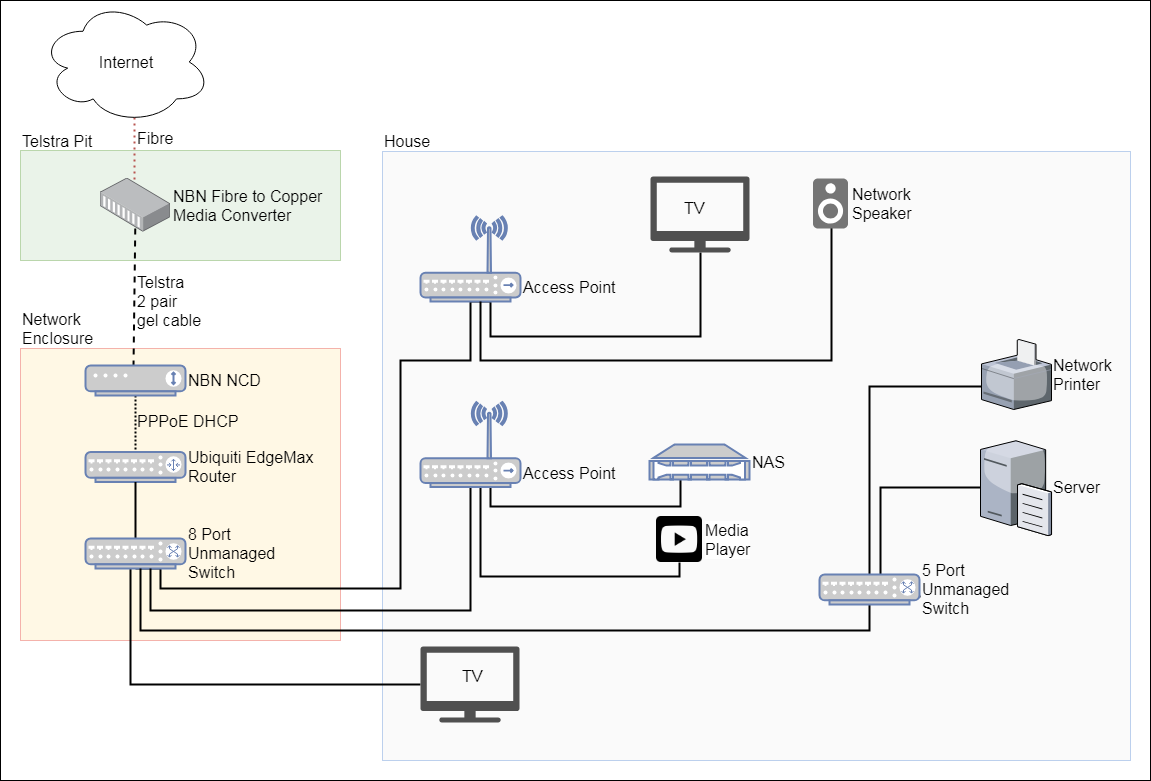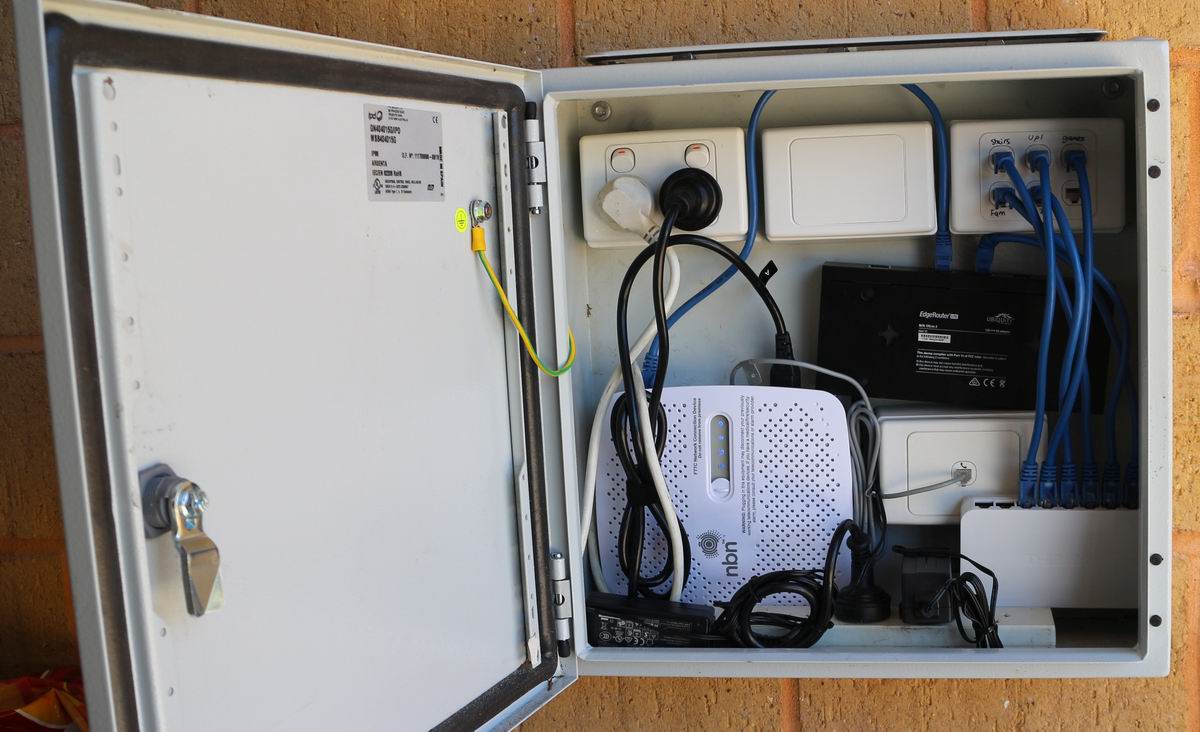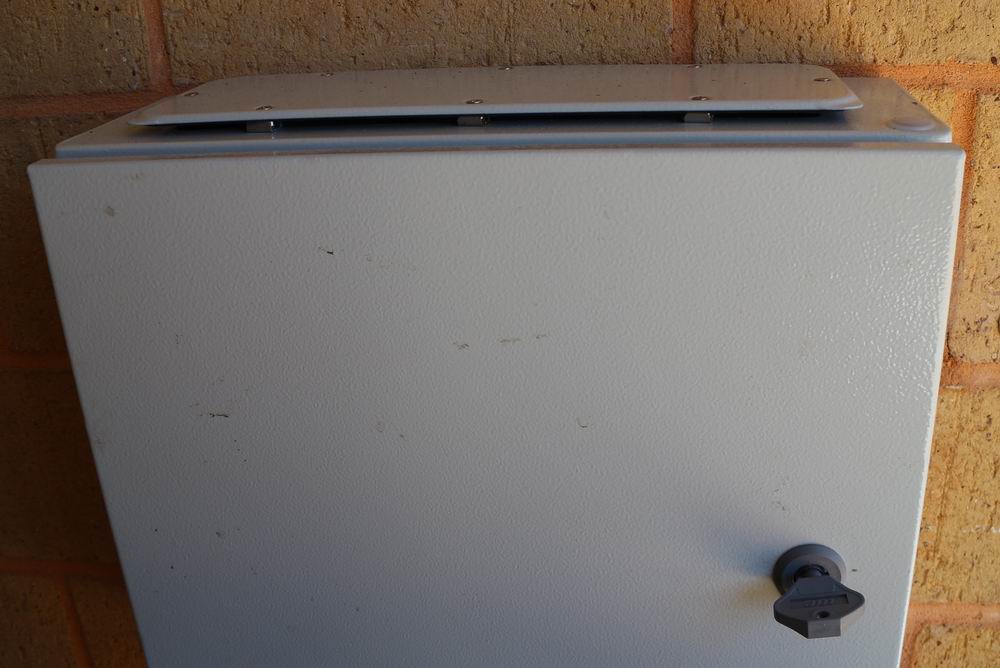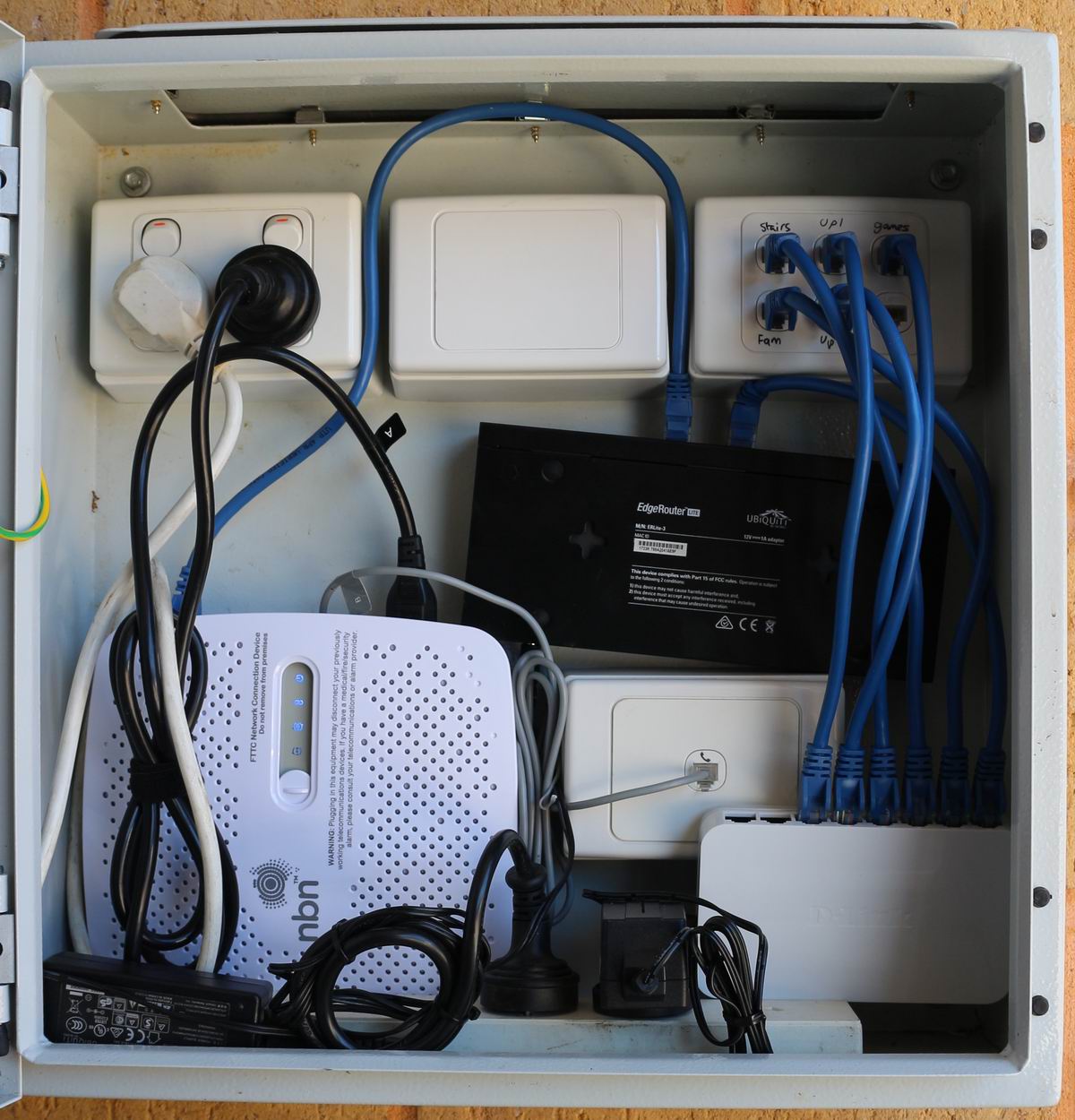After living in a house with only 3Mbps connection to the world for a decade, I was super pleased to discover I was getting NBN in 2019.
NBN "National Broadband Network" is Australia's answer to bad Internet, although it only just passes as "broadband" and in the 12 years since 2007 it was announced it's probably been the most expensive "broadband" in the world. But hey, Australia is a big difficult place to set up network infrastructure and as I'm getting fibre to the kerb (FTTC) it will be better than 3Mbps so I'm happy!
Now you are probably reading this because you had some dramas too. Like me you probably signed up with an NBN reseller, had your Network Connection Device (NCD) delivered, plugged it in and something isn't working. So is it software? Did you do something wrong? Is there some hardware problem? Or is it just not really connected out in the street somewhere? Hopefully, some of this rant helps you.
So my ADSL from years ago came in at around 2.5Mbps, because I live about 5km from the nearest exchange which was build in the early 70's. I tried different routers/modems to improve this, but by far the greatest improvement was when a friend and I cut the Telstra cable as it came into my house, hackily terminated it into an RJ11 plug, mounted the router on the wall nearby - bam, up to 3.0Mbps. Generally house telephone wiring from the 90's was fine for telephones, not so much for high speed internet.
But now, I've got a NBN modem, not working; is it the cable hack? It will cost a lot of money to get NBN man around and he finds out that it's not the NBN side of the equation. Time to enlist friend again.
For $90AUD(2019) you can buy a nice 400mmx400mmx150mm metal cabinet, buy some wall plates, mechs (the connections you put into the wall plates and patch the cables on the back) and make a neat network enclosure. This allowed me to "clean up" my network install, which is nice, because my home network is kinda complicated without having a mess at the starting point.
I have to deal with computer networks in my day job, and I gotta say, my home network is difficult for me, what do people who don't know about networks do? I mean look at my network drawing below. I updated it for the NBN FTC connection, but the ADSL implementation was the same only the modem changed. I have a router to control the modem and do some fanciness to manage the old 3Mbps fairly - a nice Ubiquiti device which can do anything, but you have to be a Ciscologist networking guru to understand how to configure it (I barely scraped by). I have copper Ethernet runs through my house to a few locations where I do server stuff or where network/video streaming occurs, for the transfer speed. These days 5Ghz Wi-Fi is enough I reckon, I probably wouldn't run copper again. Multiple access points get a clear signal anywhere in the house, and unmanaged switches to break out the copper runs to multiple devices. Note this drawing just shows the copper connected networking...only 1/4 of the devices attached to my home network are on copper, the rest are on Wi-Fi! Yes, it's complicated!

Isn't this normal a normal home network for everyone? All connections are copper Ethernet except the ones marked otherwise, Wi-Fi devices omitted.
Enough rant. I made the network enclosure have nicely patched LAN connections, a nicely patched telephone connection, power, and behind the blanked off panel is the wiring for the CTs on my ciruit breakers, a different story. Just in case you are wondering, the Clipsal 30RJ64 mech (that is the RJ11 wall connection) you can only get from electrical distributors, which is kinda funny because Bunnings will sell you power points which are dangerous if you don't know what you are doing, telephone comms are only 50VDC, with AC on top when it is ringing. The first pair into your house is blue and white, the second pair is red and black. Generally, unless you specifically know you have a second telephone line active, only the blue and white is doing anything. You connect it up like in the photo. Use a punchdown tool, you can get them cheap from eBay, all the RJ45 Ethernet points are done with that tool too.
Note that my enclosure is supposed to be bottom entry, and have a plate in the back for mounting equipment. Since I was going rear entry only I turned it upside down and used the bottom entry plate with some spacers to create some ventilation. Network equipment gets hot, especially when in a hot garage! I omitted the plate as well, the cables coming from the back went straight into the mounting plates instead.
So with everything neatly and properly installed, the NCD still had a red flashing light. The Internet told me this meant there is a problem supplying power to the media converter in the Telstra pit. This led me to an interesting realisation about the tech. About 6 months earlier, NBN men had been in my shared-with-neighbour Telstra pit "and done something". That something turns out to be a device that the NBN fibre goes into, as well as keeping the old copper lines from the exchange. When this device is powered up from your house (using the NCD device NBN gives you) it says "Hey, let's switch from ADSL into VDSL" and there you go! So NBN people don't have to go into your pit to switch between VDSL/ADSL. But note how I mentioned that the device needs to be powered up - it doesn't "borrow" power from the telephone line, you reverse power it from your house. Red flashing means this isn't happening...or the NCD is faulted.
After a couple of weeks, I've got NBN man around. "Nice work, are you a draftsman?" (!?!) "Oh, that red flashing light means the unit is faulted, let me swap it out. There you go, should be working now." Yes; it is.
Note that the NCD, with it's telephone connection and LAN connection, is actually part modem, and your router sets up the PPPoE over the LAN connection. If you use DHCP for PPPoE it happily works. You can then have your own DCHP for your local LAN, and bridged DHCP for the other access points, and use NAT masquerading from the router back.
Now that was a final part of my puzzle - great to get "fast" internet (signed up for 50Mbps) - but the kids complained that their console online games "didn't work". After much trying to get the router to port forward, even DMZ'ing the console exposed direct to the Internet, no avail. As it turns out, with the shortage of IPv4 addresses in the world, there is now another level of NAT - CGNAT (Carrier Grade Network Address Translation). So rather than your house getting a single IPv4 shared with all your home devices, the ISP has a single IPv4 for multiple houses. Okay, a work around for now, but it doesn't work for some situations, such as console online gaming (Nintendo Switch will complain about NAT Type C, D). Fortunately this is an opt-out deal with the ISP; ring them, ask them to turn off CGNAT and they will. Nice.
Viva la Internet! 50Mbps is sooo much faster than 3Mbps. I feel like I've hit the late 90's of global Internet :-)












 database
database